AMD Ryzen 9 processors from the 9000 family began appearing in stores on August 15. The next key date for the computer platform market will be October 10, when shipments of Intel Core Ultra 200 processors (codenamed Arrow Lake-S) are expected. These events will certainly affect all related markets, including the RAM market. This is especially true for the new Intel processors, which will only support DDR5.
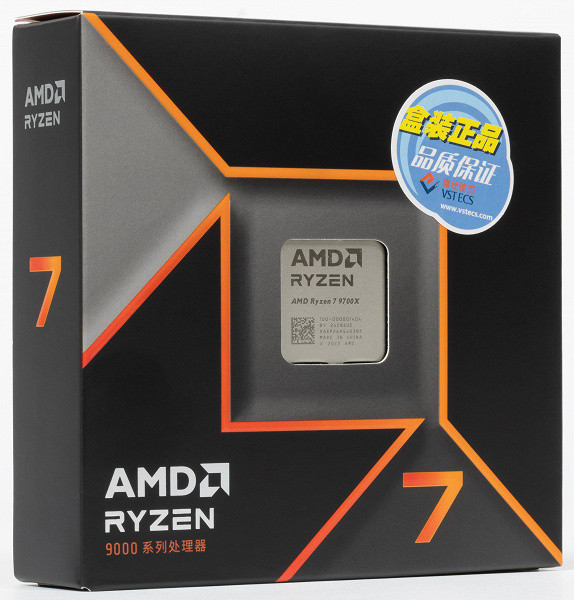
AMD made the transition to DDR5 a couple of years ago, and the new processors will significantly increase the attractiveness of the AM5 platform. Improvements are expected to affect not only the core microarchitecture, but also the memory controller, including compatibility with high-frequency modules. Although the officially supported clock frequencies have only increased from 5200 to 5600 MHz, memory overclocking has long been available for all AM5 chipsets. Changes in this area will be seen in the near future.
As for Intel, the choice remains exclusively for DDR5. This does not mean that DDR4 will instantly disappear from the market. It will still be in demand for upgrading old systems, especially in the budget segment, where AMD AM4 and Intel LGA1700 platforms will be relevant. At this price level, it is not so easy to have a large budget, so DDR4 will remain in use.
Starting this fall, DDR5 will dominate at the mid-range and above, and buyers will essentially have no choice. The only choice will be between inexpensive and high-frequency modules. In ready-made systems, cheaper options will be used more often, while for self-assembly, preference will be given to high-frequency modules. There are no problems with frequencies from 7000 MHz on Intel LGA1700, although most manufacturers still limit the maximum values for the first version of the platform to DDR5-6800 — this is more of a reinsurance. AMD's success in this regard is more modest so far, but there is hope for improvement with the AM5 update. Memory overclocking is allowed on almost all chipsets of both manufacturers (except for Intel H610, which will also affect H810), so there will be those who want to experiment with overclocking, and memory manufacturers are already ready for this.
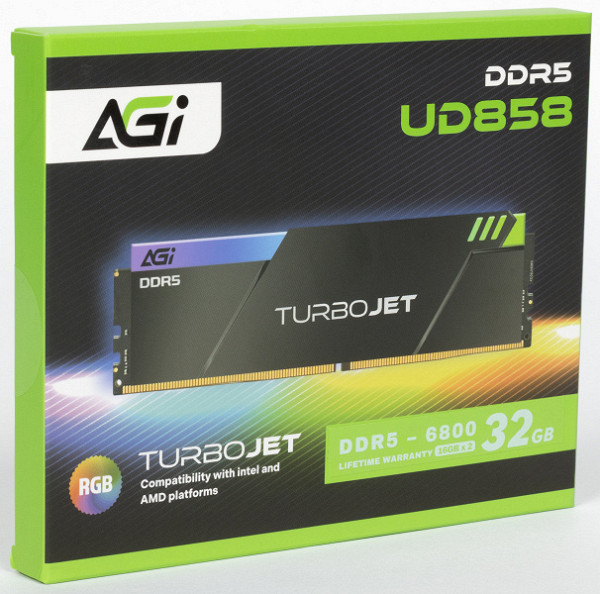
Today we will consider another typical offer for this market segment — the AGI RGB TurboJet UD858 kit. The company is targeting the mass segment, and the characteristics of this line meet all the criteria. It only includes 2×16 GB kits, which is considered sufficient memory capacity today. More expensive «non-binary» 2×24 GB have a significantly higher price, and the dual-rank modules have lower clock rates. In this case, the line covers the range from 6000 MHz to 8000 MHz in 400 MHz increments — this is the entire range covered by popular SK Hynix chips.
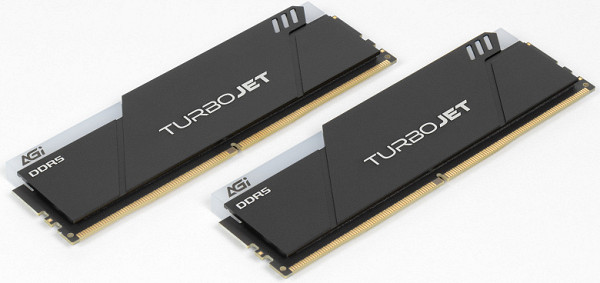
Sure, they may run slower, but clock speeds of 5600 MHz and below are now typical for the cheapest models without any special frills. We decided to take a closer look at the middle model in this line with a frequency of 6800 MHz: this is significantly higher than the standard values and is fully compatible with both the «old» and «new» versions of Intel LGA1700. The modules are equipped with customizable backlighting (it can be disabled in case of severe intolerance), but without excesses in the number of LEDs. The height of the modules is 37 mm, which does not cause problems with any coolers.
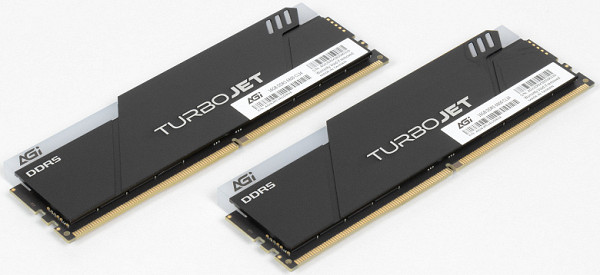
Overall, this offer is quite typical for today's market. Although 8000 MHz could hardly be called «typical» until recently, this is largely due not only to the manufacturers, but also to the memory chips themselves. Let's recall that SK Hynix chips operate stably at a frequency of about 6 GHz with a slight increase in voltage — up to 1.25 V (the standard voltage for DDR5 is 1.1 V). To reach 7 GHz and higher, a voltage in the range of 1.4-1.5 V is required.
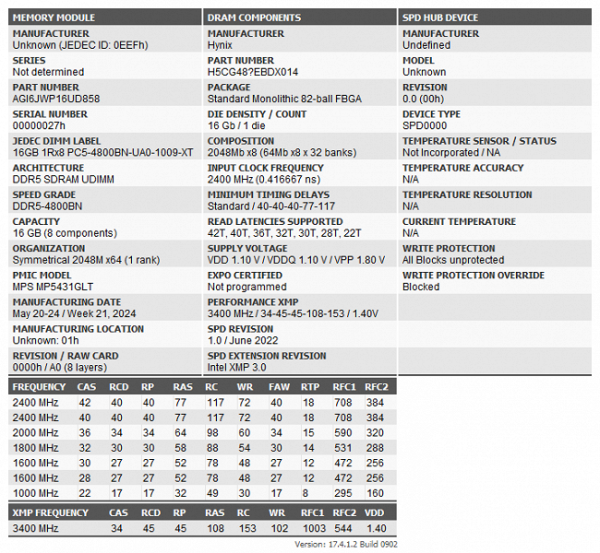
The maximum JEDEC profile for this memory is DDR5-4800. This could be criticized by the manufacturer, but this is a fairly common practice, since it is assumed that users will use higher profiles. Of these, one Intel XMP 3.0 was found, while AMD Expo could not be found using Thaiphoon Burner, although the company mentions it. This may only apply to younger models, since the AM5 platform does not yet have normal memory operation at a frequency above 6400 MHz. Therefore, we are looking forward to an update to the processor lineup from AMD.
We will continue testing the memory on the Intel platform, namely on its «old» version — Core i9-12900K and the Asus ROG Maximus Z690 Hero motherboard with the Intel Z690 chipset. The memory capabilities are limited here, but not as much as at the start, since Intel continues to refine the microcode and the original Alder Lake.
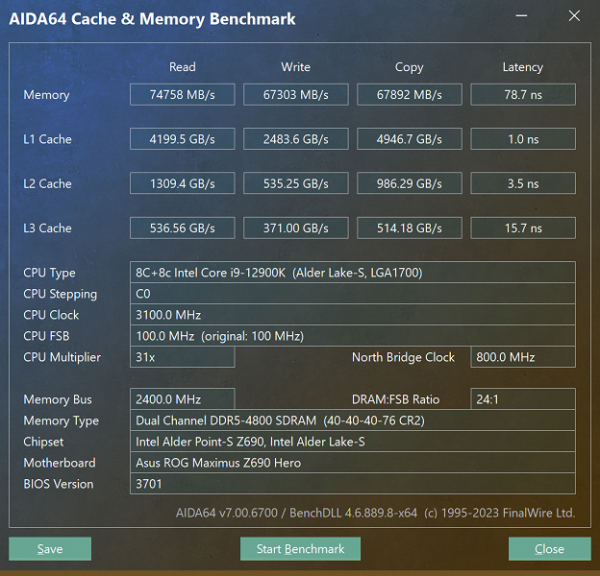
By default, the memory operates at DDR5-4800 with fairly conservative timings. However, this mode is usually only needed for the first launch, to go into the settings and select the profile suggested by the manufacturer.
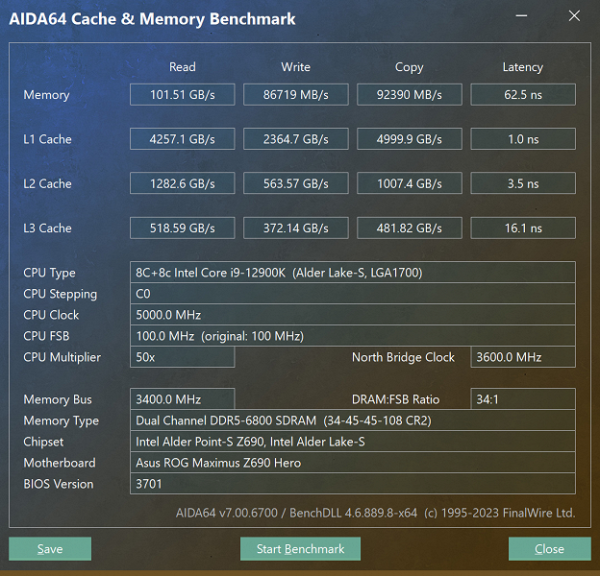
There are no problems with using this profile. All speed indicators are naturally improving, but there is nothing new here. It is more interesting to try to overclock the memory a little, since there has long been no doubt that the system can work normally with DDR5-6800. Values of 7 GHz and higher became available only a year ago.
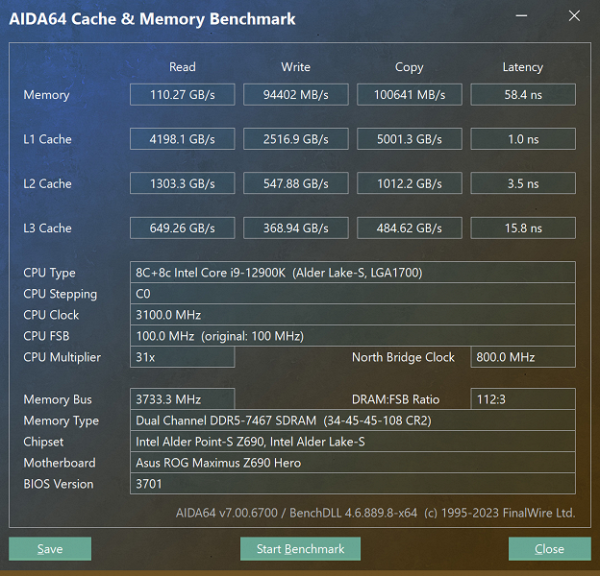
Quite recently we were able to achieve stable 7600 MHz, and on non-binary SK Hynix chips, which are a slightly newer development, even 7733 MHz. Today we managed to achieve only 7467 MHz. Perhaps more careful parameter tuning would have allowed us to achieve better results, but the manufacturer did not formally promise such values.
For clarity, we have collected the obtained results on several diagrams, starting with throughput.
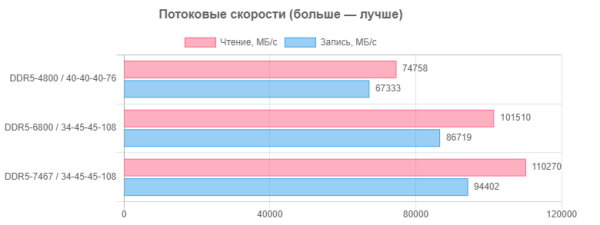
Everything is clear with reading and writing: the higher the frequency, the higher the throughput. It is possible to overcome the psychologically important mark of 100 GB/s when reading even in a relatively standard mode. However, to achieve this speed when writing, you will need a processor from the Raptor Lake/Refresh family.

No surprises here. According to AIDA64, DDR4 latencies are still lower, possibly due to the fully synchronous mode. However, this will soon become part of history. It is worth noting that even on the LGA1700 platform, DDR4 latencies have increased compared to the previous LGA1200. In any case, the gap between latencies has narrowed significantly since the platform was released, primarily due to the availability of high-frequency modules. As previously predicted, the first DDR5 products were mostly experimental, but at frequencies around 7 GHz, the new memory is already able to demonstrate all its advantages.
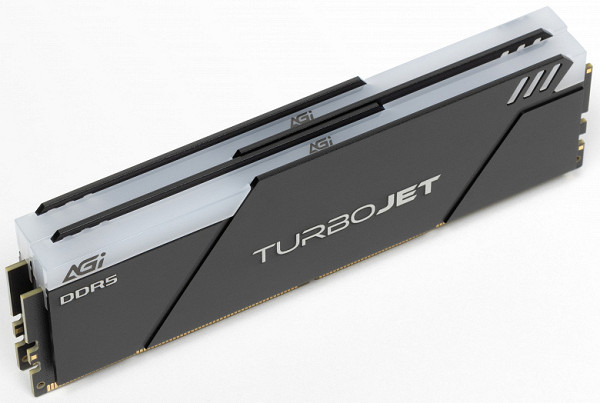
However, this requires adequate support from processors. It is not only the achievable frequencies that matter – in practice, many applications do not demonstrate the ability to efficiently process such volumes of data, despite impressive results in synthetic tests. Often, improvements are observed mainly due to the reduction of latencies as the clock frequency increases. New processor models designed to work with high-speed memory should be much better optimized – at least, we hope so. We plan to test this in practice in the near future. However, memory manufacturers have already done their part by saturating the market with high-frequency modules, including more affordable options.
